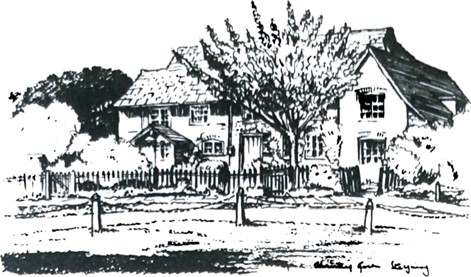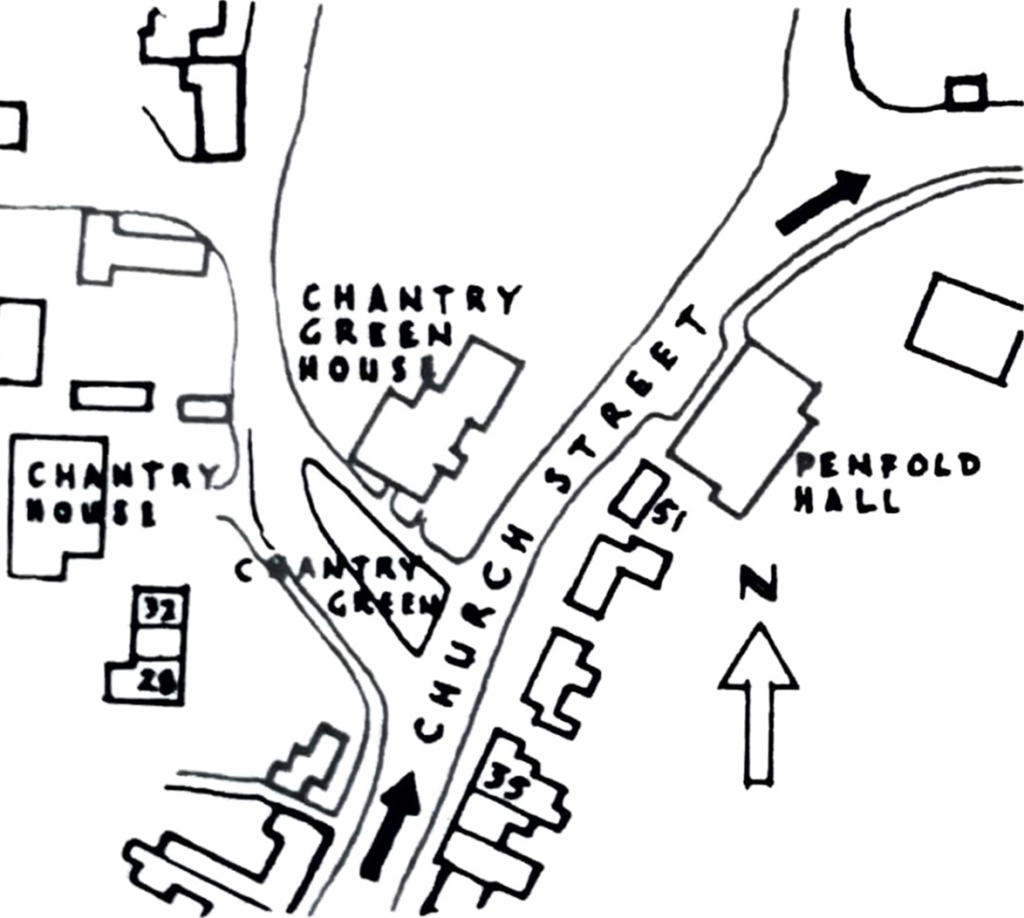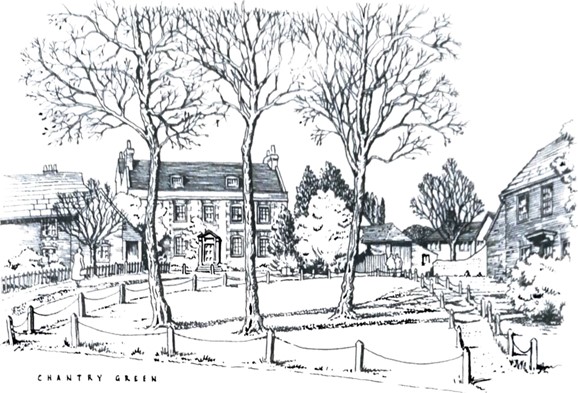Chantry Green

You are now at Chantry Green which is another of Steyning’s very attractive areas. It was here on July 23rd 1555 that the protestant , John Launder, was burnt at the stake for refusing to renounce his beliefs during the reign of Queen Mary. This is commemorated by a plaque near the library. To the left of the Green are the Chantry Cottages which were once a single timber-framed house with a full height central hall and probably another Wealden. In the centre is Chantry House, a beautiful Queen Anne building and one of Steyning’s architectural gems. A plaque on the front wall records ‘William Butler Yeats wrote many of his later poems in this house’ and, until her death in 1978, a local artist of national repute, Miss Gluck, lived here.
As the name implies a Chantry was a place for singing, where masses were chanted for the soul of the founder. It is believed that Chantry Green House, the other large house here, was built originally for the Priest of the Chantry. This house now presents an 18th. century elevation but this conceals a Tudor construction of about 1625 and completes this delightful group of buildings enclosing the little Chantry Green. James Whistler, the Anglo-American painter, was a frequent visitor to the house when it was owned by a painter named A.F. Grace. Another painter, Mark Fisher, R.A. owned it in 1882.

The Green itself is part of the curtilage of Chantry Green House and the owners maintain it in immaculate condition.
On the right hand side of Church Street opposite Chantry Green there are two modern houses, well designed with traditional materials to fit in with the character of Steyning and these replace several cottages which were destroyed by a bomb jettisoned by an enemy aircraft which had been repulsed from its London target during the war.

Luckily this was the only major material damage suffered by Steyning from enemy action in the war, although there was an unfortunate incident when a boy was killed and a little damage caused when a shell was fired accidentally by troops training on the Downs.
It was on this site that there used to be a Malthouse belonging to Mitchells Brewery.
A little further on, to the right, is the Penfold Church Hall. This was originally a Church of England School built on land acquired by the church in 1844 but was later sold to provide funds for a new school in School Lane. It was eventually bought back by the Church with a bequest from Miss Jane Penfold in 1865.
Next to the Penfold Hall is the library, a bold building completed in 1995. Behind the library is the purpose-built Steyning Museum erected in 1991. The theme of the museum will continue to be the story of Steyning’s long and fascinating history illustrated by maps, artefacts and descriptive data. There are regular special exhibitions. Since its creation in 1983 in a couple of High Street basement rooms followed by the spell in Saxon Cottage, the Museum has become a valued asset to the town and a popular venue for organised visits by schools in the area. It is run by the Steyning Museum Trust, an entirely voluntary body. Admission is free but if you find the museum interesting a donation or purchase would help the running costs.
Please cross the road and pass through the lynchgate of the Parish Church. Once ready please press Next.